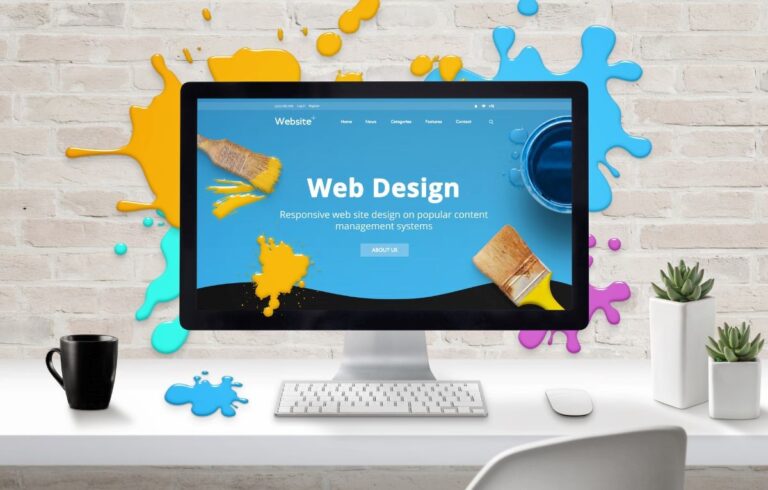How to Give Good Website Design Feedback
Feedbacks are needed to know what improvements are needed in a system. For websites, there are some improvements needed to perfect it. Websites have always space for getting better, as updates are continuously made for websites. New Braunfels web design from Texas Web Design can help you get the right feedback for better website components.
Be Specific
Focus on individual design elements such as color schemes, font styles, or layout structures. By pinpointing specific areas, you provide actionable feedback for improvement.
Articulate Changes
Clearly articulate the changes you desire in the design. Explain why those alterations are necessary to align with the project’s goals and needs.
Focus on Objectives
Acknowledging Strengths
When providing feedback on website design, acknowledge the strengths of the current design elements. Checking on the current. Feedback is needed to know what improvements are needed in a system. For websites, there are some improvements needed to perfect it. Websites have always space for getting better, as updates are continuously made for websites.
It’s essential to pinpoint specific strengths, such as a visually appealing color scheme, intuitive navigation, or engaging visuals. This recognition boosts morale and showcases the value of existing design choices. For example, praising the seamless user experience can inspire designers to maintain similar standards in other areas of the website.
Offering Constructive Criticism
Constructive criticism is crucial for guiding improvements in website design. Focus on actionable feedback that suggests specific changes or enhancements. Rather than vague critiques, provide detailed suggestions on how to address identified issues effectively. This approach empowers designers to make meaningful adjustments.
When offering constructive criticism, be clear and precise about the areas that require attention. For instance, instead of stating that a section looks cluttered, propose solutions like increasing white space or reorganizing content for better readability. This targeted feedback enables designers to implement changes with clarity and purpose.
Provide Examples
When giving feedback on website design, use concrete examples to illustrate your points clearly. This helps designers understand exactly what you’re referring to.
Utilizing Visual Examples
Visual References
Share visual examples to clarify your preferences and provide concrete guidance for improvement. Utilize screenshots or mood boards to convey your design vision effectively. These aids help in articulating specific solutions and ideas.
Bridging Communication Gaps
Visual aids play a crucial role in bridging communication gaps between stakeholders and designers. They offer a tangible representation of abstract concepts, ensuring a shared understanding of the vision.
Enhancing Collaboration
By incorporating visual examples into your feedback, you can enhance collaboration with designers. This approach encourages a more constructive dialogue by pinpointing areas of improvement through clear ideas.
Fostering Creativity
Visual references not only enhance clarity but also foster creativity. They inspire new solutions and innovative approaches by providing a visual roadmap for design iterations.
Encourage Collaboration
Acknowledge Expertise
Feedbacks need a more positive approach, as designers make an effort and even conduct research before finalizing them. Recognizing their skills can lead to a more collaborative and productive working relationship. By valuing their knowledge, you establish a foundation of respect and trust.
Open Communication
Openly communicating with your designer is key to successful collaboration. Clearly express your thoughts, preferences, and concerns regarding the website design. This transparency fosters a better understanding of each other’s perspectives, leading to improved design outcomes.
Set Clear Expectations
From the initial stages of the project, it’s essential to set clear expectations and boundaries with your designer. Define the brand elements that are non-negotiable and outline specific goals for the business website. This clarity helps align both parties toward a common vision for success.
Streamlining Feedback Process
Consolidating Feedback
When providing design feedback, it’s crucial to consolidate multiple points into clear, actionable suggestions. By organizing feedback into specific categories such as layout, color scheme, or functionality, designers can easily address each aspect efficiently.
Feedback that is scattered or vague can lead to confusion and delays in the design process. Therefore, consolidating feedback helps streamline communication and ensures that designers understand exactly what needs to be improved.
Prioritizing Feedback
To enhance the effectiveness of website design feedback, it’s essential to prioritize the points based on their importance and impact on the overall design. By identifying critical issues first, designers can focus on addressing key areas that significantly impact user experience and functionality.
Prioritizing feedback also helps prevent designers from feeling overwhelmed by a long list of suggestions. By tackling high-priority items first, they can make meaningful improvements without getting lost in minor details.
Moving forward, those involved in website design projects need to internalize these strategies and implement them consistently. By doing so, they can cultivate a more constructive feedback environment, leading to innovative designs that resonate with users. Remember, feedback is a valuable tool for growth and refinement in the world of design. To get a better result for your feedback, get a reliable web designer to work on the details of your websites. Web designers know better as they have mastered the best elements to make a website more engaging for audiences.



